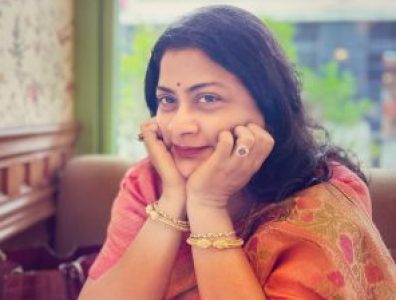||Why Bhārata instead of India|| There is a 2200 years old “Hātigumphā Inscription” found in the ‘Udayagiri Hills’, near Bhubaneshwar in Odisha. This is a very special inscription, as it contains the earliest recorded mention of the word “Bhāratavarṣa” (Prakritized as – ‘Bhāratavasa’). Line number 10 of this inscription mentions “Bharatavarsha” (translation published by Jayaswal…
Bengal temples II- Hindu revival period (16th-19th c. CE)
A brief look at the political and socio-religious scenario that led up to the 16th century Hindu revivalism under Sri Chaityna With the start of the Muslim invasions from the end of the 12th century and the subsequent settling down of these invaders in Bengal marked a sharp breakaway from the past within the socio-cultural…
Photodocumenting Museum Sculptures I – Coochbehar Palace Museum (newly renovated)
All photos by Anirban Sarkar (if images are downloaded and shared, please give his name as reference) Surya, 10th c. CE Navagraha panel, 10th c. CE 4 armed Devi, 9th -10 c. CE Fragmentary remains of a likely Vishnu Stele, at the two sides are Devis Lakshmi and Saraswati, 11-12th c. CE remains of ornametal…
Taking a look at the Devi images on seals and other artefacts from the Harappan times to the Gupta era in Hindu Iconograpy
Hindu temple iconography is a difficult subject. It takes a lot of reading and understanding of the philosophies behind the symbolism to get at the basics. Then of course there are the varying interpretations of each symbolism as per the philosophy one tends to believe in. There’s a saying in Bengali : joto mot, toto…
Devi sakti and Durga in her two main forms: Katyayani and Mahishasuramardini
Listen, O Devi, I will speak concisely of the essence of yoga. The body resembles a tree, with the root above and the branches below. In the macrocosm there are tirthas (bathing places) which also exist in the body. The macrocosm is like the microcosm. ~ Todala Tantra, II Liberation comes from knowledge of self. ~ Kaula Upanishad Within…
The various Durga-Mahishasuramardini pratimas as seen through the ages – a pictorial depiction
The ugra aspect of the devi is best characterised by her Mahishasuramardini image, which has been depicted in various ways over the centuries. The Vedic text such as Vajasaneyi Samhita, Taittiriya Aryanaka, Kena, Mundaka Upanishads, Sankhayana grihasutras mention Durga in her various forms; the soumaya (quiet/placid) forms among them being that of Gauri, Parvati, etc….
Bengal Temples I – The Early Hindu period
The history of Bengal’s Hindu temple architecture can be divided into three basic categories: Here in this article I will discuss the Early Hindu period. Early Hindu temple architecture in Bengal The temples in the early Hindu period in Bengal were in large numbers but have mostly disappeared mainly due to the widespread iconoclastic temple…
Mudras and Postures seen in Indian Iconography
Studying the murtis created in the past helps in understanding a great deal of the social history of that times, and the local cultures from where the murtis originated. The dress, jewellery, weapons, etc., depicted on a murti is a direct reflection of what was in vogue among people living in that era. Varahamihira in…
Ekanamsa- an aspect of Devi Sakti in Vaishnavism
The Sakta group of followers within Hinduism believes in the Feminine principle as the Brahman or the Supreme Consciousness, and their worship revolves around various Devi images, many of which are popularly associated with Shiva. However, Devi sakti is also associated with Vishnu-Krshna from an early period in Indian history. Besides Sri or Lakshmi, who…
Shiva- the conqueror of Time and Death
Aum Tryambakam yajaamahe sugandhim pushtivardhanam | Urvaarukamiva bandhanaan-mrityormuksheeya maamritaat || One among the most influential gods in Hinduism, Shiva is a part of the old Hindu triad, and his followers are cumulatively known as Saivites, although there are many sects within it. While Shiva is associated with the act of destruction (Samhara) or dissolution (Pralay)…
